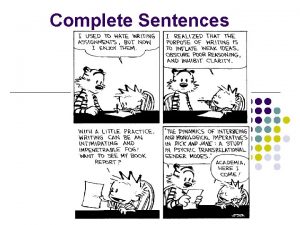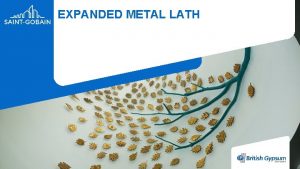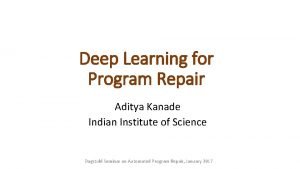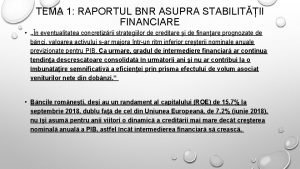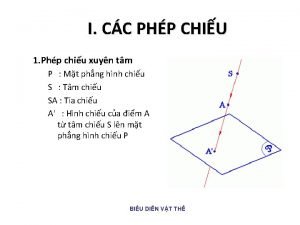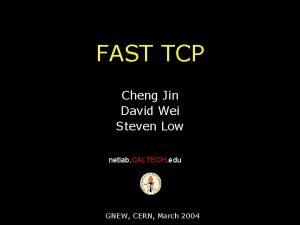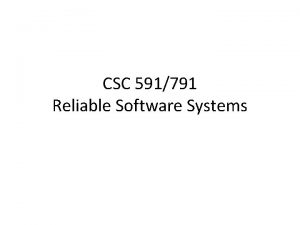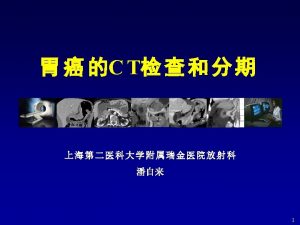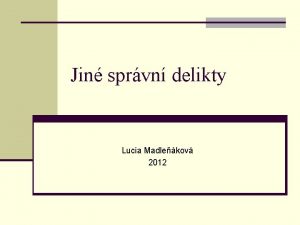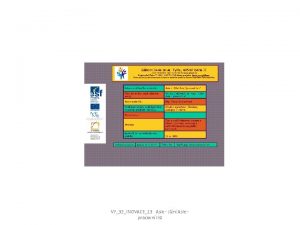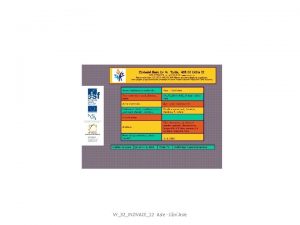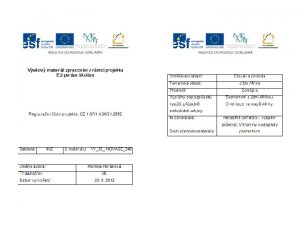AFix Automated AtomicityViolation Fixing Guoliang Jin Linhai Song























- Slides: 23

AFix Automated Atomicity-Violation Fixing Guoliang Jin, Linhai Song, Wei Zhang, Shan Lu, and Ben Liblit University of Wisconsin–Madison 1

Needs to Find and. Concurrency Fix Concurrency Bugs § Multicore era is coming already here § Programmers struggle to reason about concurrency § More and more concurrency bugs § Many concurrency bugs can be automatically detected Thread 1 if (ptr != NULL) { ptr->field = 1; } § But bugs need to be 2 fixed Thread 2 ptr = NULL; Segmentation Fault

Bug-fixing § Bug-fixing process is lengthy and resource consuming Understand bug 1 … Understand a bug … Understand bugn Generate a patch Review & test the patch Correctness Performance Readability § Nearly 70% of patches are buggy in their first releases § Automated fixing is desired, but difficult in general 3

Automated Concurrency-Bug Fixing § Concurrency bugs are feasible to be fixed automatically § Program is correct in most interleavings. Thread 1 if (ptr != NULL) { ptr->field = 1; } Thread 2 Thread 1 ptr = NULL; if (ptr != NULL) { ptr->field = 1; } § Only need to remove some bad interleavings. Thread 1 if (ptr != NULL) { } 4 ptr->field = 1; Thread 2 ptr = NULL; Segmentation Fault Thread 2 ptr = NULL;

AFix: Automated Atomicity-Violation Fixing § Why atomicity-violation bugs? § One of the most common types of concurrency bug § Strategy § Statically adding locks to remove buggy interleavings. § Goal § Automate the whole bug-fixing process § Provides best-effort atomicity-violation patches • Correctness • Performance • Readability 5

AFix Overview Input from CTrigger Bug understanding Manual Bug Fixing Progress 6

CTrigger Bug-Detector Review § A single-variable atomicity-violation detection & testing tool § It reports a list of buggy instruction triples § Abbreviated as {(p 1, c 1, r 1), …, (pn, cn, rn)} Thread 1 previous access if (ptr != NULL) { current access ptr->field = 1; } Thread 2 ptr = NULL; 7 remote access

AFix Overview Input from CTrigger (p 1, c 1, r 1) …. . . … (pn, cn, rn) Bug understanding patch 1 … … … patchn merged patch 1 … merged patchm adding runtime support Patch generation Manual Bug Fixing Progress 8 patch testing Patch testing

Outline § Motivation § Overview § AFix § § One bug patching Patch Merging Runtime support Patch testing § Evaluation § Conclusion 9

One Bug Patching § Make the p-c code region mutually exclusive with r § Put p and c into a critical section § Put r into a critical section § Select or introduce a lock for the two critical sections p r c 10

Put p and c into a Critical Section: naïve § A naïve solution § Add lock on edges reaching p § Add unlock on edges leaving c § Potential new bugs p p c c § Could lock without unlock § Could unlock without lock § etc. 11

Put p and c into a Critical Section: AFix § Assume p and c are in the same function f § Step 1: find protected nodes in critical section § In f’s CFG, find nodes on any p c path § Step 2: add lock operations protected node § protected node unprotected node § Avoid those potential bugs mentioned 12 p c

p and c Adjustment § p and c adjustment when they are in different functions § Observation: people put lock and unlock in one function § Find the longest common prefix of p’s and c’s stack traces § Adjust p and c accordingly void newlog() { … p: close(); c: open(); … } 13 void close() { close() … newlog() p: log = CLOSE; … } void open() { … c: log = OPEN; } open() newlog() …

(p, c, r) Patching: put r into a critical section § Lock-acquisition before r, lock-release after r § Only if r cannot be reached from the p–c critical section fpc() { lock(L 1) p. . . r … c unlock(L 1) } case 1 14 fpc() { lock(L 1) p. . . foo() {… r} … c unlock(L 1) } r’s call stack: … fpc foo … r case 2

(p, c, r) Patching: select or introduce a lock § Use the same lock for the critical sections § Lock type: § Lock with timeout : in case of potential new deadlock § Reentrant lock : in case of recursion § Otherwise: normal lock § Lock instance: § Global lock instances are easy to reuse 15

Patch Merging § One programming mistake can lead to multiple bug reports § They should be fixed all together void buf_write() { p 1 int tmp = buf_len + str_len; if (tmp > MAX) return; p 1 c 1 p 2 r 1 c 2, r 2 c 1 p 2 memcpy(buf[buf_len], str_len); r 1 c 2, r 2 buf_len = tmp; } § Too many lock/unlock operations § Potential new deadlocks § May hurt performance and readability 16

Patch Merging: redundant patch § Redundant patch, when p 1–c 1, p 2–c 2 critical sections § are in the same function: redundant when one protected region is a subset of the other § are in different functions: consulting the stack trace again lock(L 1) p 1 lock(L 2) p 2 c 2 unlock(L 2) c 1 unlock(L 1) 17 lock(L 1) r 1 unlock(L 1) lock(L 2) r 2 unlock(L 2) unlock(L 1)

Patch Merging: related patch § Related patch § Merge if p, c, or r is in some other patch’s critical sections lock(L 1) p 1 lock(L 2) p 2 c 1 unlock(L 1) c 2 unlock(L 1) unlock(L 2) 18 lock(L 1) r 1 unlock(L 1) lock(L 2) r 2 unlock(L 2) unlock(L 1)

Runtime Support and Testing § Runtime support to handle deadlock § Lightweight patch-oriented deadlock detection • • Whether timeout is caused by potential deadlock? Only detect deadlocks caused by the patches Has low-overhead, and suitable for production runs Help patch refinement § Traditional deadlock detection § In-house patch testing 19

Outline § Motivation § Overview § AFix § § One bug patching Patch Merging Runtime support Patch testing § Evaluation § Conclusion 20

Evaluation: Overall Patch Quality Bug Naïve Unmerged Manual Apache - - My. SQL 1 - My. SQL 2 - Mozilla 1 - Mozilla 2 - Cherokee - FFT - - PBZIP 2 - - - § Patched failure rates: 0% § Patched overheads: <0. 6% (except PBZIP 2 and FFT) (except PBZIP 2) § With timeout triggered deadlock detection 21

Conclusion § Atomicity violations are feasible to be fixed automatically § By removing bad interleavings § Must be careful in the details § Use some heuristics, and excellent results in practice § Completely eliminates detected bugs in targeted class § Overheads too low to reliably measure § Produces small, simple, understandable patches § Future research should do detector and fixer co-design 22

Questions about AFix*? *DISCLAIMER FROM AFIX: “I REPRESENT HUMANS’ EFFORTS TOWARDS FIXING THE WORLD AUTOMATICALLY USING TOOLS. HOWEVER, THE WORLD IS SO IMPERFECT THAT I DO NOT KNOW WHETHER THE WORLD IS FULLY FIXABLE , THUS I MAKE NO 100% GUARANTEE. ” 23
 Cdc afix
Cdc afix Difference between permanent joint and temporary joint
Difference between permanent joint and temporary joint Macroprudential intermediation ratio
Macroprudential intermediation ratio Limelite plaster
Limelite plaster Demerits of double headed rails
Demerits of double headed rails Is the furry kitten a complete sentence
Is the furry kitten a complete sentence Which progressive reform outlawed price-fixing
Which progressive reform outlawed price-fixing Metal lath uses
Metal lath uses Phrase fragment
Phrase fragment Aditya kanade
Aditya kanade Price fixing definition
Price fixing definition Where do we get nitrogen from
Where do we get nitrogen from Bid rigging vs price fixing
Bid rigging vs price fixing Fixing bnr
Fixing bnr Price fixing definition
Price fixing definition Fixing service failures
Fixing service failures Cây vừa sống trên cạn vừa sống dưới nước
Cây vừa sống trên cạn vừa sống dưới nước Hình chiếu vuông góc
Hình chiếu vuông góc Come let us sing a song a song declaring we belong to jesus
Come let us sing a song a song declaring we belong to jesus Cách chứng minh hai đường thẳng song song
Cách chứng minh hai đường thẳng song song What makes a song a song
What makes a song a song In tr
In tr Giọng song song là gì
Giọng song song là gì David jin caltech
David jin caltech





